WORKSHOP CLOSED FOR SUMMER
UPDATE 18 May 2025
Hi everybody! I will not be taking orders for flutes until October. The very short Swedish summer is approaching and I wish to spend as much time as I can outdoors. Tending my vegetables. Walking the coastline. Exploring new tunes and techniques.
Also, my workshop needs a good cleanup. Tools need sharpening, machines need maintenance. And I have some exciting new flute design ideas that I would like to develop.
Have a great Summer!
Flute design and construction
A Tim Adams Irish Flute weighs only 300 grams. It is accurately tuned and easy to play. The inside bore is conical to enable you to move easily between octaves and the tone holes are placed to suit normal sized and smaller hands. Brass rings are mounted on the headpiece and foot. This adds to the stability of the flute at the tenon joints, and it helps to prevent cracks in the wood.
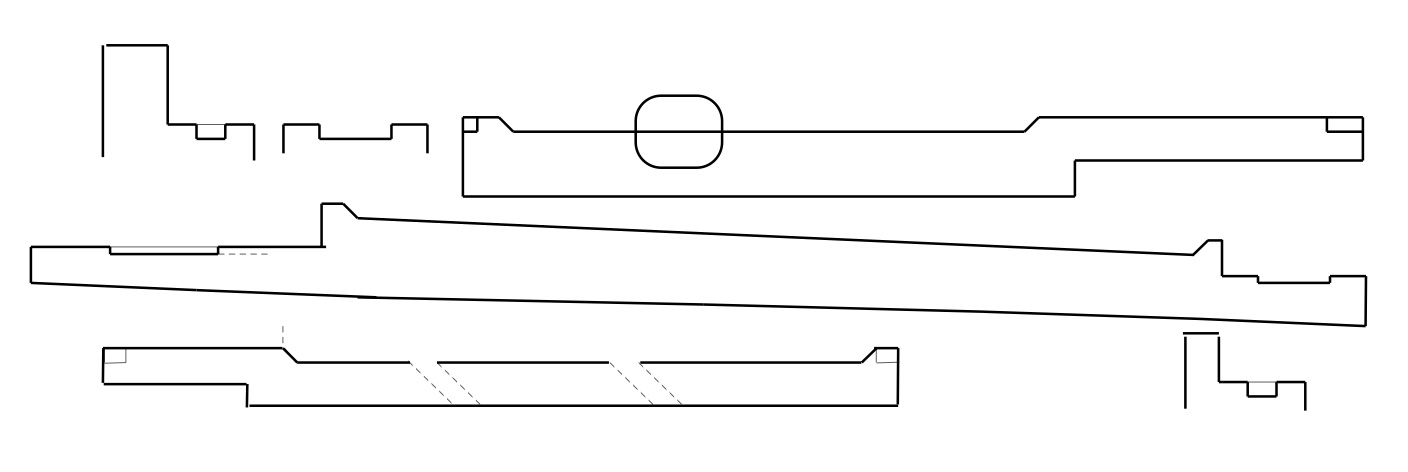
Affordable design
The wood is high quality and the workmanship is accurate. I follow my own design and process to create a very good flute that is relatively affordable to buy. The lines are straight, the surfaces are sanded by hand and much care is taken to make the flute very enjoyable to play.
Five pieces. One flute
A Tim Adams Irish Flute is 5 pieces including cork and end cap. The headpiece has a cylindrical standard 19 mm reamed bore and the cork is positioned 20 mm north of the embouchure center for best tonality. The embouchure is formed as an ellipse. At the north end of the headpiece is the end cap. The main (middle) piece is tapered (conical) outside and inside. Then comes the foot. It has one tone hole. The foot enhances the low D and low E notes.
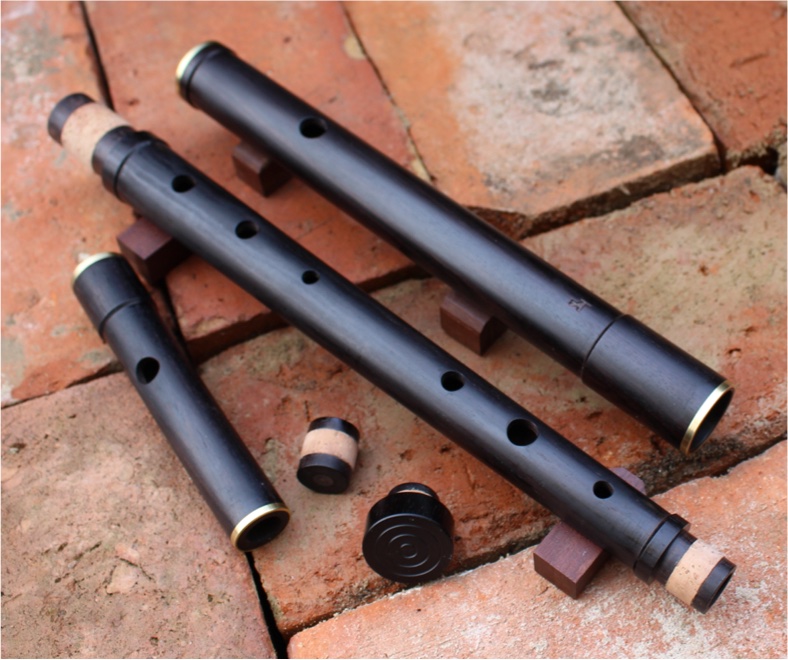
Innovation – scale changer – F natural plug
This is my own innovation – the Scale Changer. It is a plug that fits precisely into the F# tone hole. The hole in the plug is half the diameter of the F# hole which sinks the tone by a semi-tone to give you an F natural. It’s a useful note to have if you want to explore some eastern or southern European music or Scandinavian music, without having to spend a relative small fortune on a flute with keys.
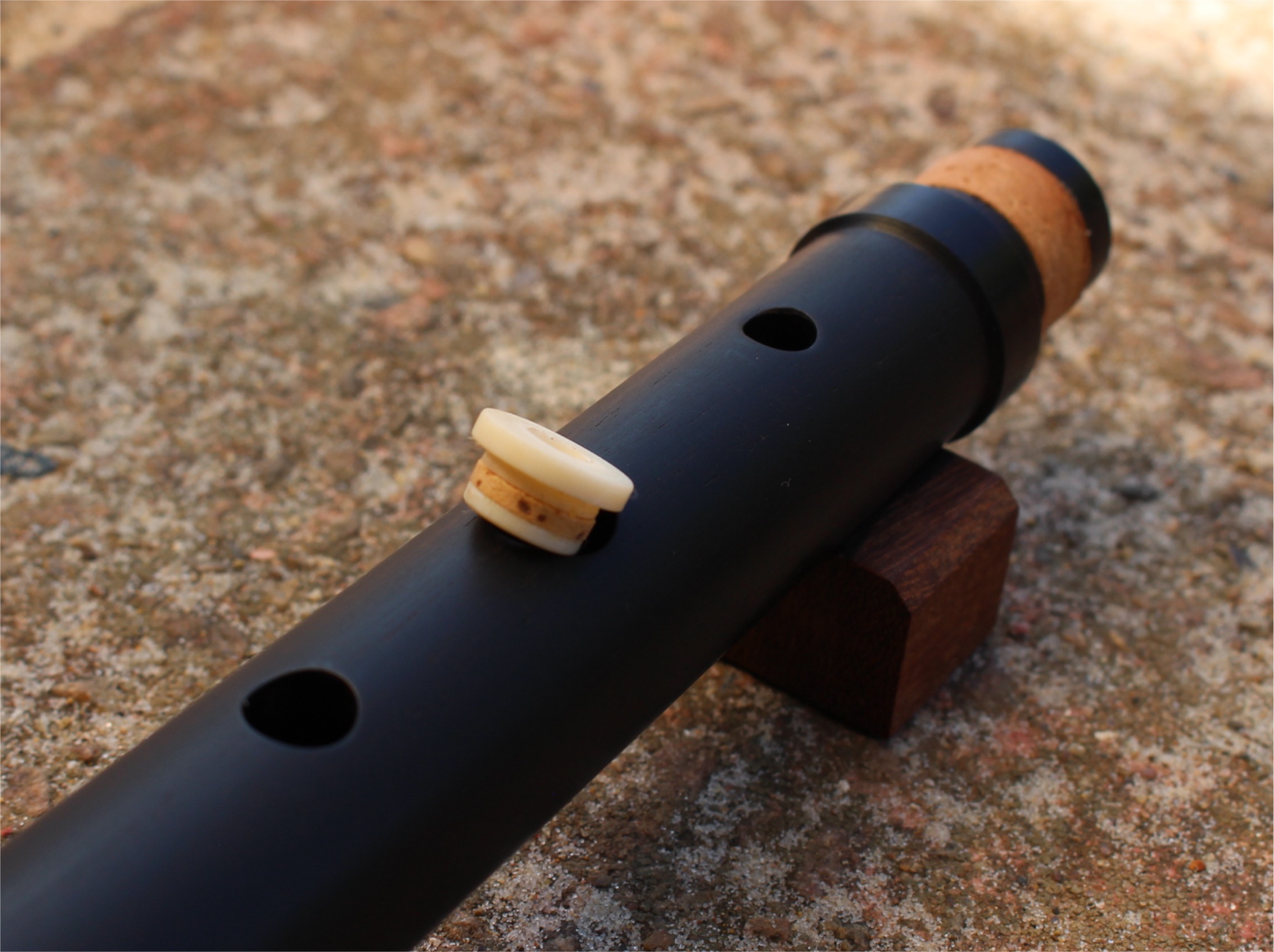
Innovation – combined tuning/cleaning rod
A combined tuning and cleaning rod. You should clean the inside surface of the headpiece now and then. To do this, assemble the combined tuning and cleaning rod, remove the end cap and cork and clean the inside surface of the headpiece. When you’re done, use the plastic tube to position the cork exactly where it was when I tuned your flute.
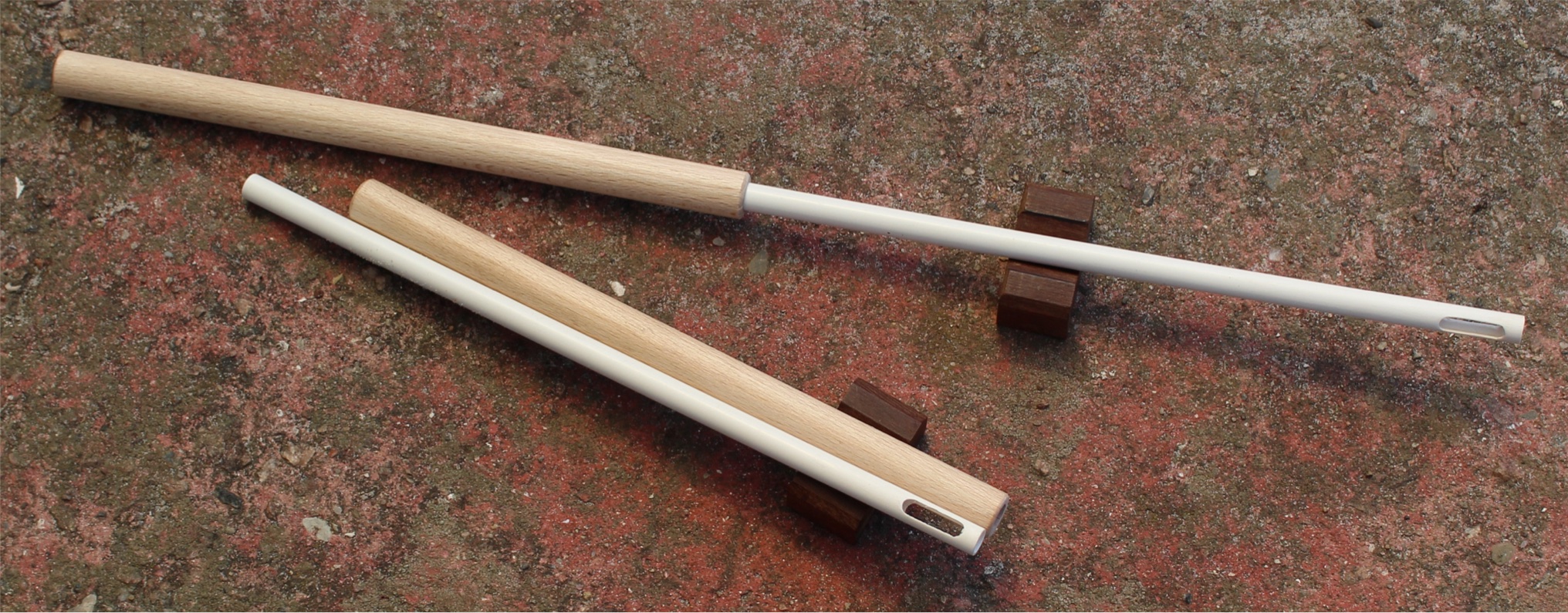
Engineering
The experience of playing a wooden traverse flute is quite magical and the moods you can create are endless. But making a good flute is very much about engineering. Making sure the internal tapered bore has the correct form and surface, every time. Getting the tone holes in a straight line. Being consistent in embouchure shape and surface. Fitting the tenon joint and allowing for future deviation in dimension.
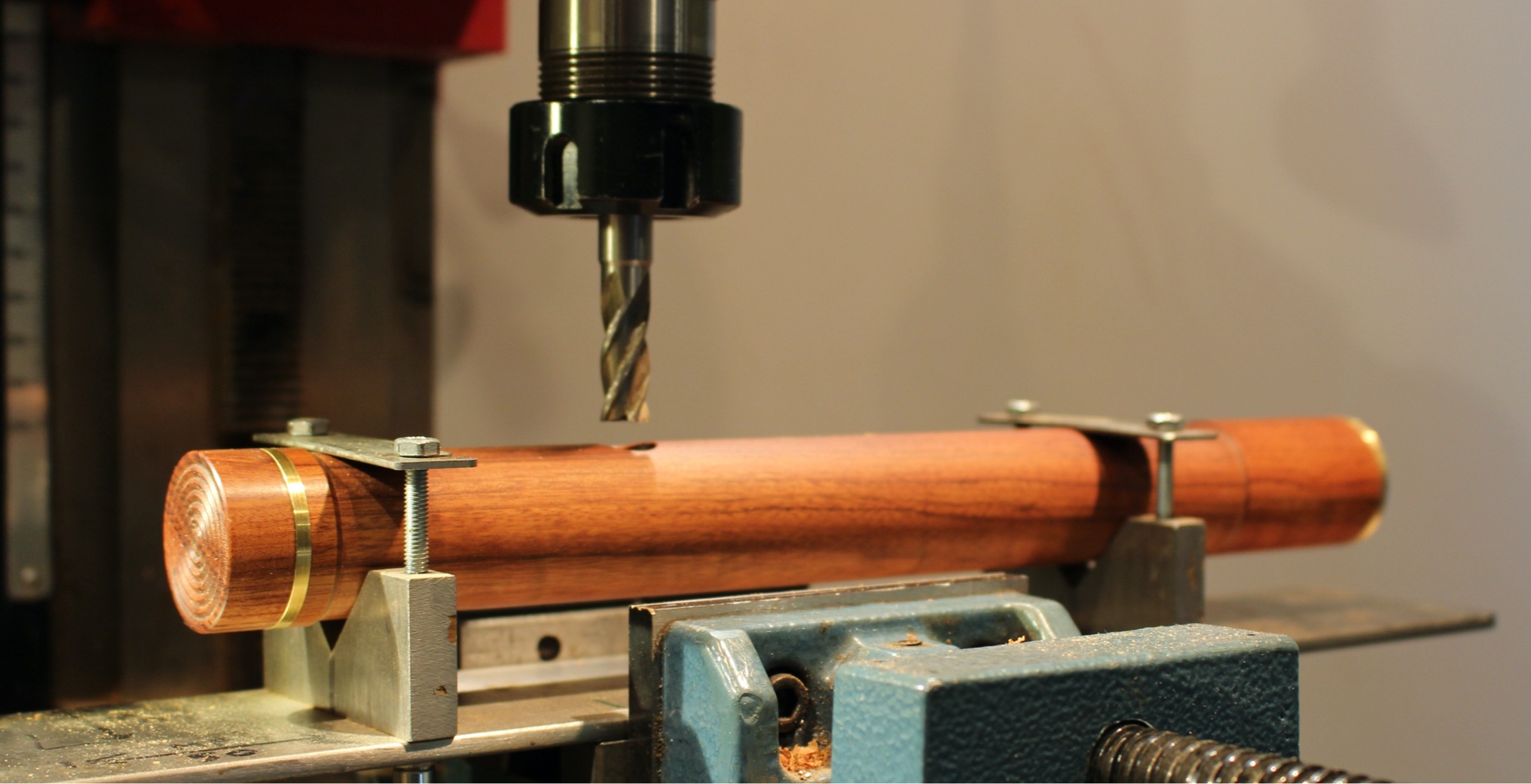
Tools to cut and shape
Like most flute makers I make my own reamers and other tools and fixtures. A set of tapered reamers is used to create the tapered internal bore where the music happens. Stepped drills are used to incrementally increase the diameter of tone holes (by 0.25 mm per step) when tuning the flute. The turning is done on a small metalworking lathe and I use a precision milling machine to form the embouchure and drill the tone holes.
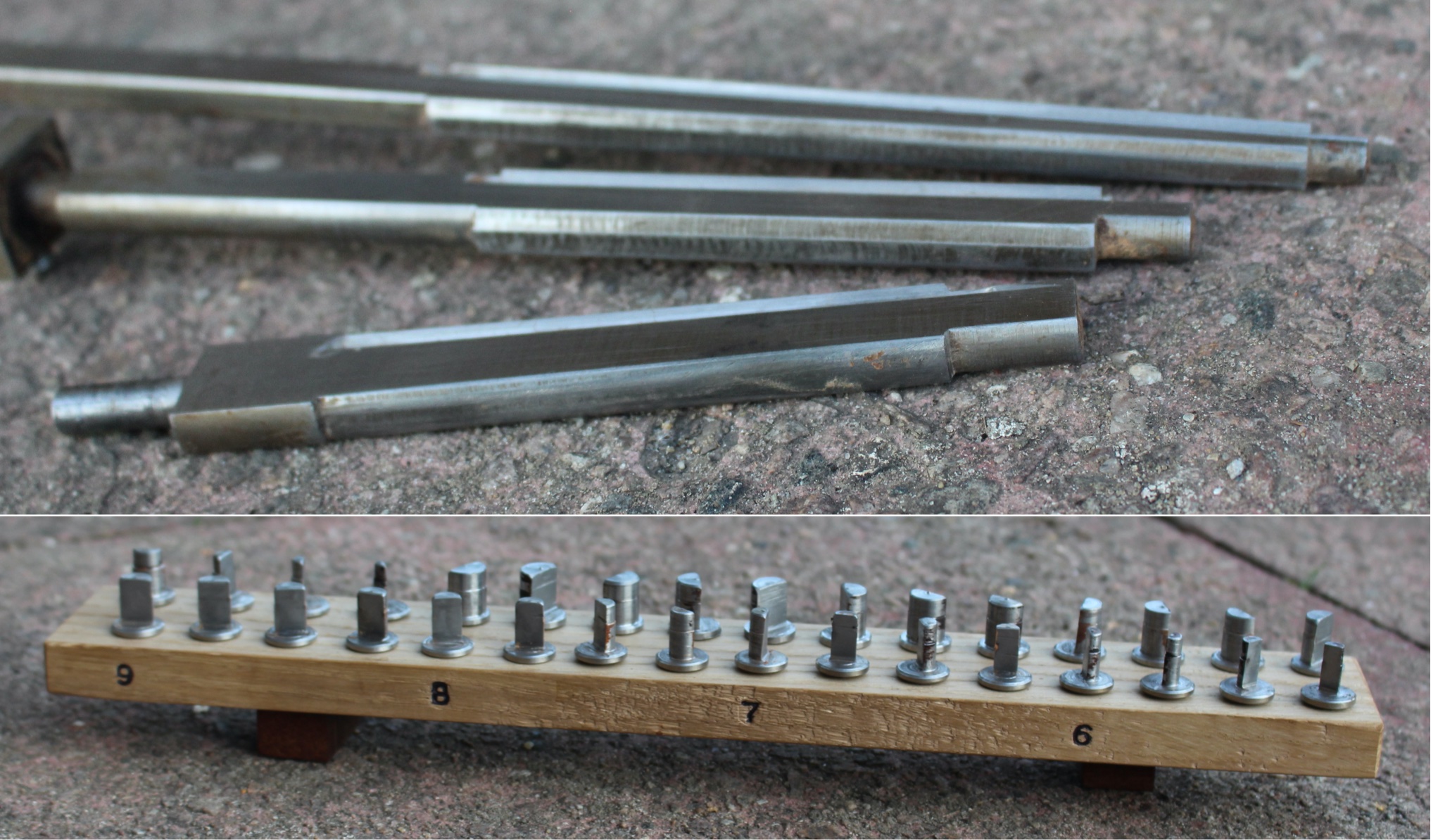
Wood and brass
The flute pieces are turned and bored from solid square blanks of African Blackwood. The
rings are made from brass. I buy the African Blackwood from Espen in Germany. They
are FSC certified and I trust in their commitment to responsible
forestry. The 1.0 mm thin sheets
of cork for the tenon joints, cork and cap are sourced from Wind Plus
LTD in the UK.
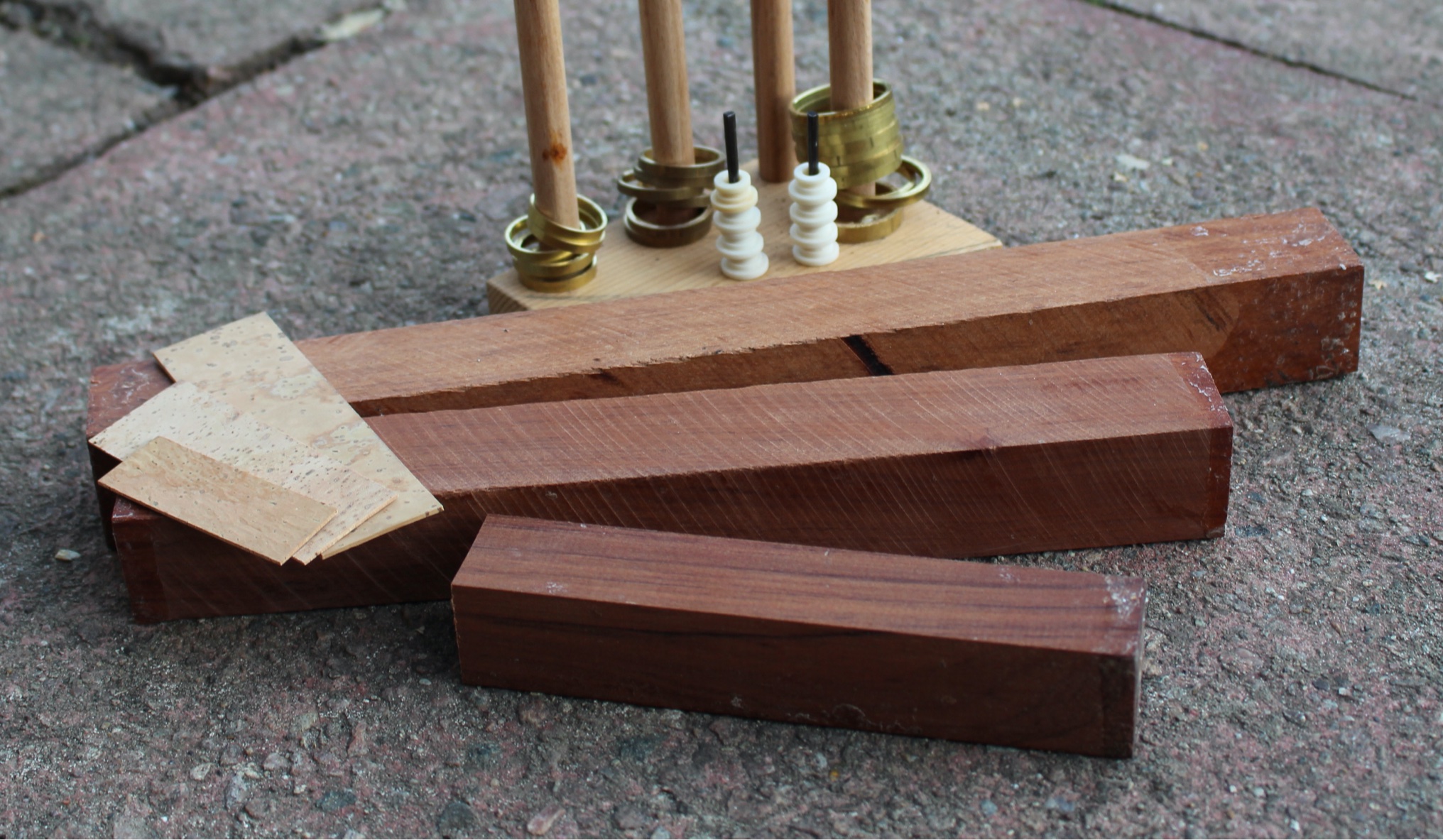
My mark. Your number
Each flute is marked with my T.A. mark and logo. The mark is burnt into
the
headpiece using a small heated metal wedge. The individual flute number
is stamped into the reverse side of the end cap and the first two digits represent
the year in which it was made.
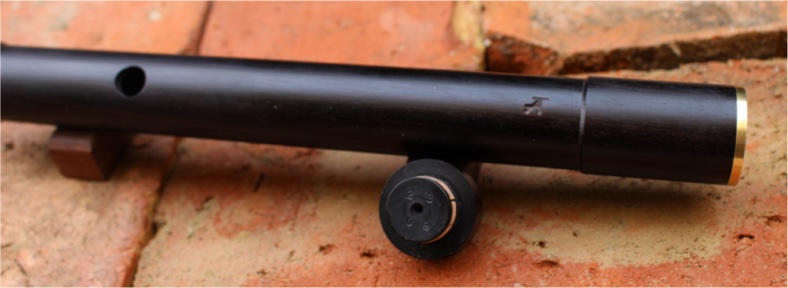
Accessories
My wife makes an excellent stiff cloth case with compartments for
three
flute pieces. The case is designed to protect your flute from damage
and two wooden strips are sewn in to the flanks to keep it straight and
stable. A tuning/cleaning rod is in two pieces. Also included in the
kit are a stick of cork grease, a cleaning cloth and an Adams F Plug.
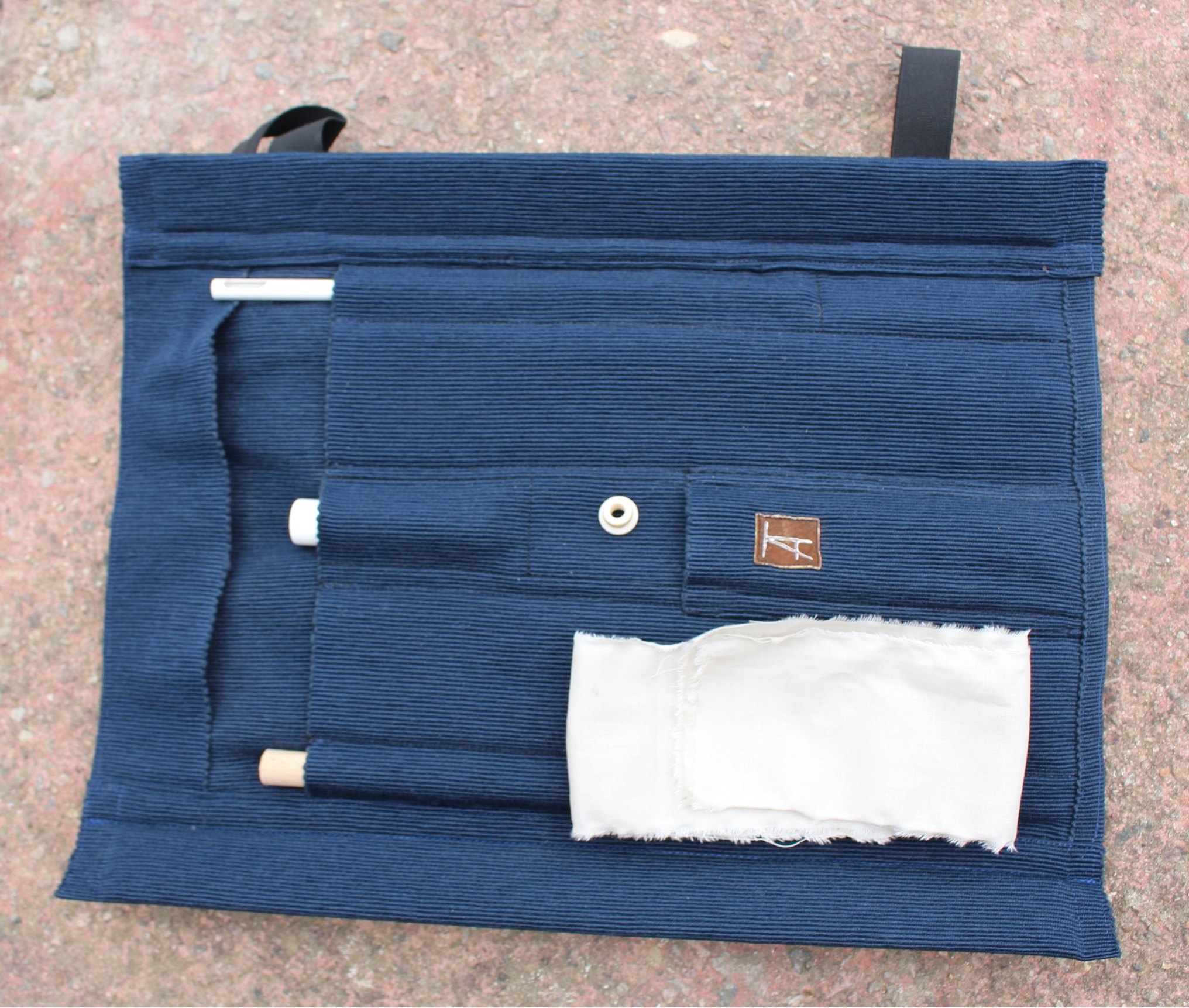
Things happen
If you take good care of this wooden flute you will enjoy it for a
lifetime. If anything happens that makes it less playable or
unplayable, let me know and we’ll make it right. If the tenon joint
gets tight or a brass ring loosens due to shrinkage, I’ll tell you what
to do or do it for you. These things don’t happen often, but they do happen.
Remember, your flute was once the branch of a tree, and then it was cut
and stored for years in a dark place. Then I brought it home and gently carved it inside and out.
Now you bring it to new places, give it life, and make it sing again.
